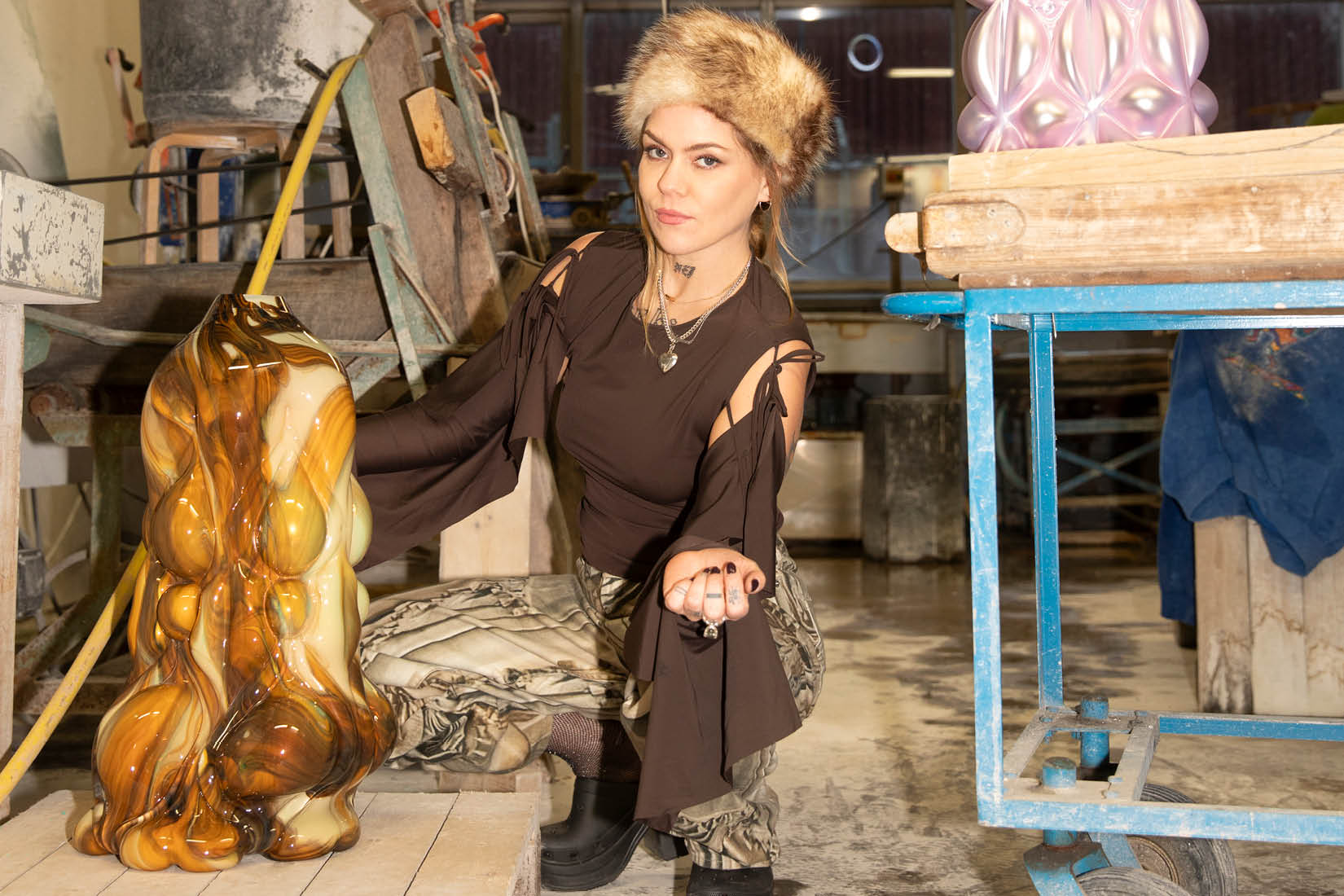Since Hanna Hansdotter (born in 1984) graduated from the Konstfack University of Arts, Crafts and Design, her career has taken a meteoric rise. Her sparkling, exuberant, baroque-style and unashamedly kitsch sculptures have rapidly earned her a place, both nationally and internationally, as one of the rising stars of Swedish glass. Hansdotter plays with ornamentation and graphic structures. By welding thin sheets of iron together, she builds ingenious moulds with complex patterns that allow the glass to expand partially freely. The result: contorted objects that seem to be on the verge of collapsing; voluptuous glass forms that spill out in all directions yet retain a striking presence and precision.
Over the past few years, Hanna Hansdotter has been exploring the aesthetic possibilities of sagged glass, which involves heating a sheet of glass until it softens and takes on the shape of a mould. This method has enabled her to adapt her characteristic ornamental language – previously reserved for three-dimensional blown-glass sculptures – and move towards two-dimensional mural works.
Hanna Hansdotter lives and works in the heart of ‘Glasriket’ (the Kingdom of Crystal). In addition to working on her own artistic projects, she regularly receives design commissions from Kosta Boda. She trained at the Kosta Glass School and at the National School of Glass in Orrefors and has a keen interest in glass-related industrial processes – an invaluable asset for her work as a designer. Hansdotter masterfully explores the potential of the material while continually pushing it to its limits and redefines the language of glass in a contemporary and expressive way. She also creates site-specific installations for public spaces. Her works are exhibited in numerous art centres in Europe and the US and are included in some prestigious collections, notably in the Röhsska Museum in Gothenburg, the Nationalmuseum in Stockholm and the Nationalmuseet in Oslo.
